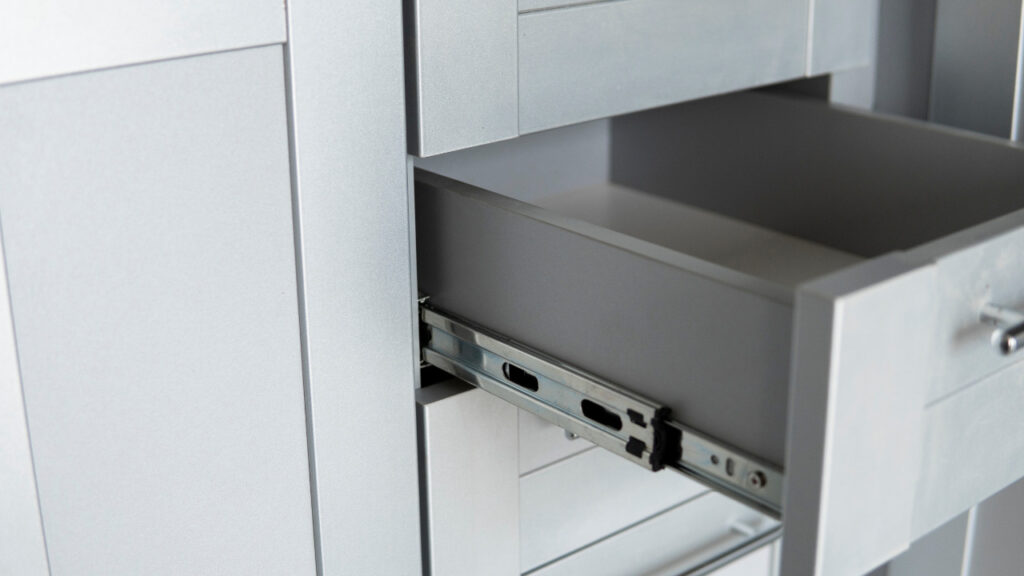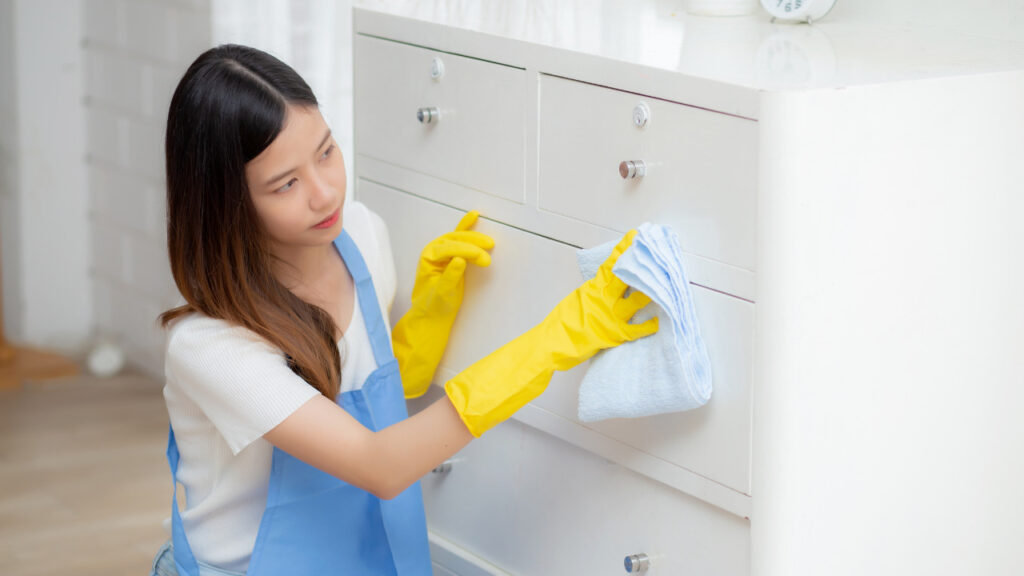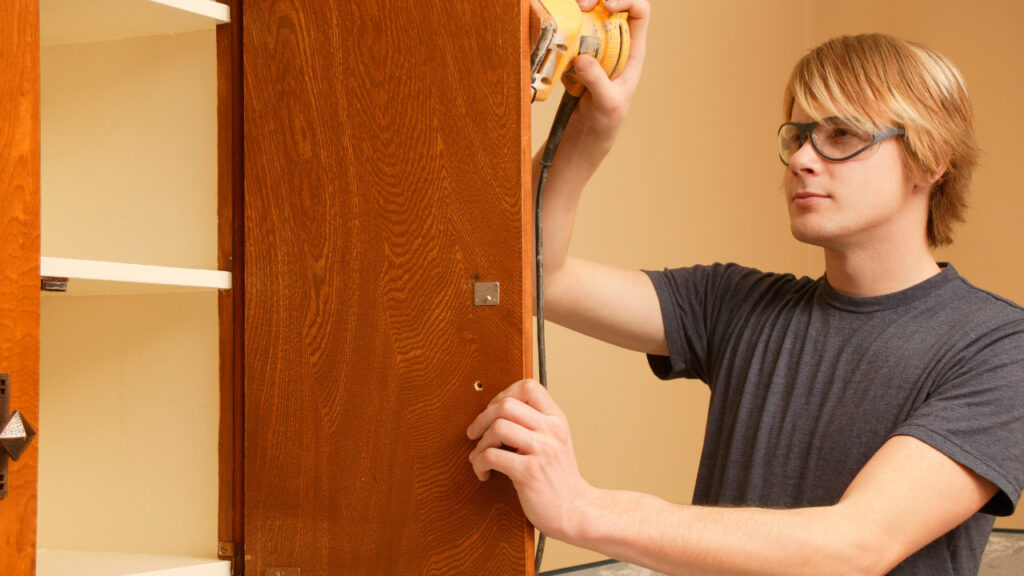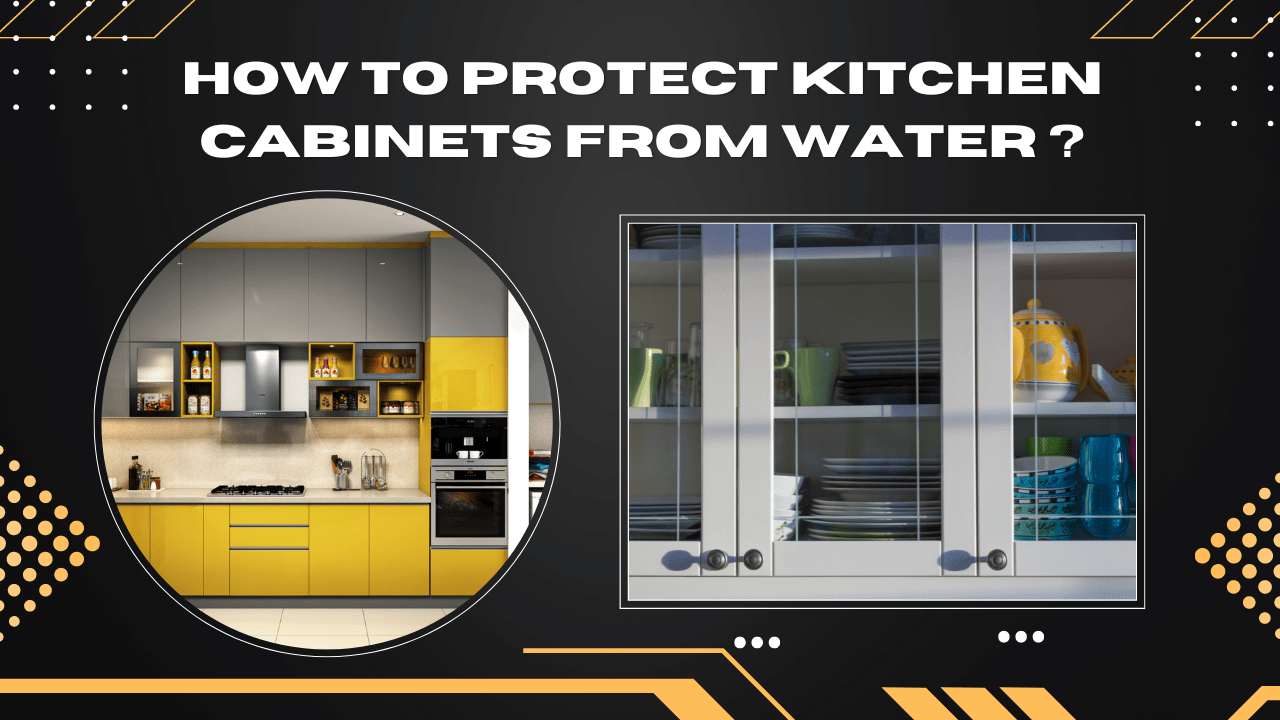We all love our kitchen and want to keep exploring different ideas to make it aesthetic and functional. However, the kitchen is prone to spills, humidity, and moisture. All of this can deteriorate the quality and aesthetics of the kitchen cabinets. That’s where waterproofing kitchen cabinets comes into the scenario.
It is an important step that you must take to retain the functionality of your kitchen cabinets. So, what to do about it? How to protect kitchen cabinets from water damage?
Before discussing different ways to waterproof your kitchen cabinets and how you can do it at home, let’s walk through the benefits of waterproofing kitchen cabinets.
Table of Contents
7 Benefits of Waterproofing Kitchen Cabinets
Waterproofing cabinets protect against water-related damage and prolong longevity as well. No matter if you are installing the base cabinets or trying to tend the older ones, waterproofing kitchen cabinets is a must.
Here’s why it’s important and how waterproofing kitchen cabinets benefits you:
1. Protection from Spills and Splashes
When you are preparing a feast in the kitchen, spills, and splashes are bound to happen. Whether it’s a pressure cooker spill or a cup of tea tipping, these liquids can seep into the woods of the cabinets.
Waterproofing can fix this issue as it protects the wood and prevents water from soaking in.
2. Prevention from Swelling of the Wood
Wooden cabinets can absorb moisture from the air. This moisture can then seep in and cause swelling and warping of the wood.
Waterproofing prevents wood from deteriorating and preserves the cabinet’s overall look and appearance. You won’t need frequent replacements because you have kitchen cabinet water protection.
3. No More Mold and Mildew
Kitchens are the wettest places in the house. The moisture can dampen the cabinets and make these a breeding ground for mold and mildew. It not only looks gross but can be harmful to your health.
Waterproofing kitchen cabinets make it harder for moisture to get in and damage the wood.
4. Enhanced Durability
Kitchen cabinets are an investment in your kitchen’s functionality and durability. Waterproofing forms an extra layer of protection on the cabinets, saving you money in the long run.
5. Easy to Clean
It’s easier to clean the waterproof kitchen cabinets because they don’t let stains and spills stay over the wood.
6. Aesthetic and Appealing to the Eye
Waterproofing adds an extra layer of protection keeping the cabinets new and shiny for many years. It benefits you in the long run if you ever plan on selling your house.
7. Simple Process
Waterproofing kitchen cabinets is not complicated. You can even do it on your own. A little effort now can save your kitchen cabinets from big water damage later.
3 Easy Steps to Prepare for Waterproofing Kitchen Cabinets
Now that you have decided to waterproof your kitchen cabinets, the next step is the preparation as follows.
1. Assessment of the Cabinet State
Firstly, you have to evaluate the current status of the kitchen cabinets. Ask the important questions while assessing the condition such as:
- Do you have an existing cabinet water damage scene?
- Are there any structural issues with the cabinets?
- Is it due to pipe flooding or something else?
Do a thorough assessment and prepare the kitchen cabinets according to the damage done.
2. Gather Appropriate Tools
The next step is to collect appropriate tools if you have got adventure on your mind. These tools may include rollers, brushes, sandpaper, cleaning agents, etc.
Moreover, you will also need waterproofing products like sealers, varnishers, finishes, and polyurethane coatings.
3. Remove Any Hardware from the Cabinets
If you want your waterproofing process to go smoothly, remove any hardware contents from the cabinets. These include handles, hinges, knobs, etc.
Doing this will ensure a smooth waterproofing kitchen cabinets process. Moreover, it will prevent the hardware from getting coated with waterproofing products.

3 Different Types of Waterproofing Methods for Kitchen Cabinets
While we are on the subject, let us walk you through the different options available for waterproofing.
1. Oil-Based Finishes and Sealers
Oil-based finishes and sealers have been traditionally used for waterproofing wood. They are durable and have a rich appearance.
Oil-based sealers penetrate the wood of the cabinet doors and provide a protective and water-repellent layer.
But beware! These sealers and finishes can emit strong fumes during application. That’s why they need a long drying time between coats.
2. Water-Based Finishes and Sealers
If you want an eco-friendly option, water-based finishes and sealers are your go-to method. They emit low fumes during application. However, they have a fast drying rate and excellent clarity.
The only drawback is they don’t provide the same depth as oil-based sealers. However, they may still provide enough protection against moisture that seeps through your kitchen cabinets.
3. Lacquers and Varnishes
This is another waterproof material for kitchen cabinets that you can select.
These are high water repellents and provide next-level protection against moisture. You can even apply these over stains or paints, apart from wood. However, you will need careful application of these materials to avoid streaks or bubbles.
4. Polyurethane Coatings
This coating provides high-level water protection and resistance. You can get this in various formulations, such as oil-based or water-based.
If you are going to waterproof kitchen cabinets near the sink or dishwasher, polyurethane coating is the material you need.
A Step-by-Step Process for Waterproofing Kitchen Cabinets!
Let’s discuss the step-by-step process for waterproofing kitchen cabinets:
1. Clean the Cabinets!
First of all, you have to do a thorough cleaning of the cabinets. It will remove dust, grease, and residue.
Use proper cleaning agents that won’t leave behind a residue. It is crucial as any residue left behind can interfere with the waterproofing products.

2. Sand the Cabinet Surfaces
Want to create an even texture and smooth surface for your kitchen cabinets? Either way, make sure to sand the cabinet surfaces.
Doing this ensures the waterproofing agents and products adhere correctly to the surfaces. It will help achieve a flawless finish to the kitchen cabinets.
3. Apply the Waterproofing Product You Chose
Now, apply the chosen waterproofing agent evenly across the cabinet surface using brushes, rollers, or sprayers.
Make sure to apply complete coverage on the surface. You can follow the manufacturer’s guidelines for a better experience.
4. Let the Surface Dry Between Coats
Give proper time for your newly polished kitchen cabinets to dry. It is crucial because, without proper drying time, the kitchen cabinets can get messy, with uneven application or compromised adhesion.
5. Do a Sand and Buff
While applying coats, lightly sand the cabinet surfaces for a smooth appearance.
When you are done with the final coat, use fine-grit sandpaper to buff the cabinet surface. It will give a polished and fine finish to the cabinets.

6. Repeat the Process If You Feel Like it
You can apply multiple layers of the waterproofing agent if you want to give your kitchen cabinets optimal protection.
However, while repeating the waterproofing process, stay vigilant and avoid messing up the finished surface.
7. Allow the Cabinets Proper Curing
Before starting to use your newly waterproof kitchen cabinets, make sure the finish has been fully cured, and the wood is completely dry.
You may have to wait a few days, but it’s best to allow the finish a proper set for maximum effectiveness.
6 Proven Hacks for Proper Kitchen Cabinet Maintenance
Cabinet installation cost can be reduced by practicing a proper maintenance routine is a must. We have identified some of the best ways to do so.
1. Ensure Regular Cleaning Routines
Your kitchen cabinets need regular cleaning routines. So, make one using mild cleansers.
However, don’t use harsh chemicals or abrasive products. These can strip away the protective finishing touch.
2. Reapply Waterproofing Agents Periodically
As time passes, the upper protective layers can wear down due to cleaning. Whenever that happens, you can simply reapply waterproofing agents on your kitchen cabinets.
3. Don’t Forget the Seams and Joints
Amidst waterproofing the kitchen cabinets, don’t forget the seams and joints. These areas need generous waterproofing application as well to prevent water infiltration.
4. Take Care of the Cabinet Interiors
The cabinet exteriors are crucial. We get it. But don’t forget the interiors. The spills can damage the interiors and leave them rather unpresentable.
You can use shelf liners to protect against food spills inside the cabinets.
5. Choose Waterproof Material for Kitchen Cabinets
You should get waterproof materials that are naturally resistant to water damage if you are thinking of small galley kitchen ideas on a budget.
Some good options are stainless steel, marine-grade plywood, waterproof MDF, etc.
6. Protecting Cabinets Near Sinks and Dishwashers
The cabinet areas near the sinks and dishwashers are the most vulnerable to water infiltration and damage.
To protect these, you can apply additional coats of waterproofing agents. Consider using polyurethane coatings to give extra protection to the cabinet doors.
A Last Word on Waterproofing Kitchen Cabinets!
Waterproofing kitchen cabinets is a practical investment that can save you from spending on costly repairs after the water damage. It enhances the beauty and longevity of your kitchen.
Prevention is necessary, as waterproofing protects your cabinets, and preserves the aesthetic sense and comfort of your kitchen in the longer run.





